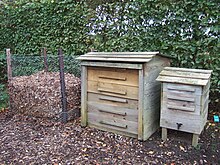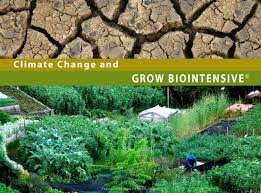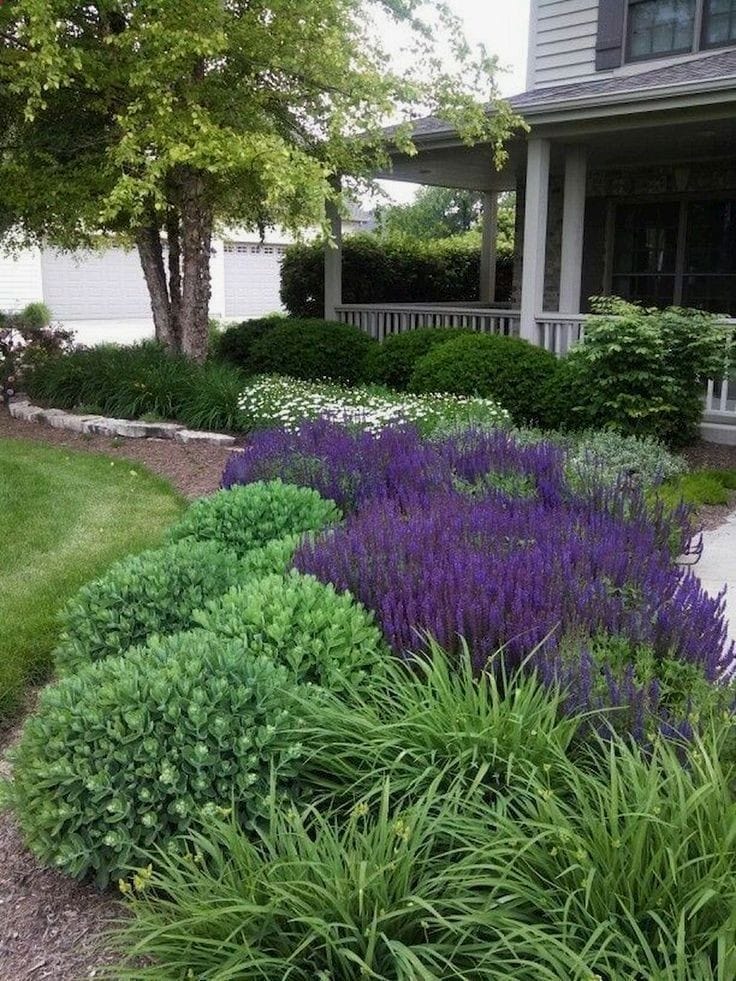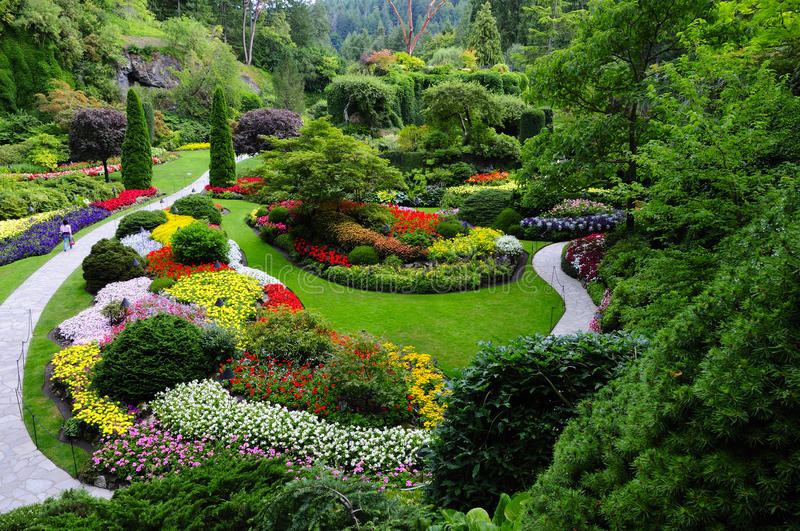Climate-friendly horticulture is horticulture in ways that reduce greenhouse gas emissions from gardens and promote soil and plant uptake of carbon dioxide to help reduce global warming . Being a climate-friendly gardener means considering both what happens in the garden and the materials brought into it and their impact on land use and climate . It may also include garden elements or garden activities that help reduce greenhouse gas emissions elsewhere.
An orchard with fruit trees, herbaceous perennials and ground cover plants at Hergest Croft Gardens, Herefordshire, UK.
Content
- 1 Land use and greenhouse gases
- 2 Gardening to reduce greenhouse gas emissions and sequester carbon dioxide
- 3 Protecting and enhancing carbon stocks
- Protecting land carbon stocks outside gardens
- UK carbon stocks
- Protection of carbon stocks in wetlands
- Protecting forest carbon stocks
- Protecting and increasing the carbon footprint of garden warehouses
- 4 Reduce greenhouse gas emissions
- Using gardens to reduce greenhouse gas emissions
- 4.2 Reduce greenhouse gas emissions from gardens
Land use and greenhouse gases
Most of the excess greenhouse gases causing climate change have come from the burning of fossil fuels . But a special report by the Intergovernmental Panel on Climate Change (IPCC) estimated that over the past 150 years, fossil fuels and cement production have only caused about two-thirds of climate change: another third has been caused by human land use .
. The three main greenhouse gases produced by unsustainable land use are carbon dioxide , methane , and nitrous oxide . Black carbon or soot can also be caused by unsustainable land use and, although not a gas, can behave like greenhouse gases and contribute to climate change.
carbon dioxide
Carbon dioxide , CO 2, is a natural part of the carbon cycle , but humanity’s use of the land is often added more, especially from habitat destruction and soil cultivation . When forests , wetlands, and other natural habitats are converted to pastures , arable fields , buildings, and roads, the carbon found in the soil and vegetation becomes additional carbon dioxide and methane in order to trap more heat in the atmosphere .
Gardeners can cause additional carbon dioxide emissions. be added to the atmosphere in several ways:
- using peat or potting compost that contains peat;
- buying garden furniture or other wood products from woodlands that have been destroyed rather than taken as renewable crops from sustainably managed woodlands;
- digging up the soil and leaving it bare so that the carbon in the soil organic matter is oxidized ;
- using power tools that burn fossil fuels or electricity generated by burning fossil fuels;
- The use of heaters for the terrace ;
- Heating of greenhouses by burning fossil fuels or electricity is generated by burning fossil fuels;
- burning garden clippings and weeds at the stake ;
- Buying tools , pesticides , synthetic nitrogen fertilizers (more than 2 kg of carbon dioxide equivalent is produced for each kilogram of ammonium nitrate produced), and other materials that have been produced using fossil fuels;
- Heating and cleaning swimming pools by burning fossil fuels or electricity generated by burning fossil fuels;
- Watering their gardens with tap water that has been purified and pumped out by burning fossil fuels, with an exposure to greenhouse gases of about 1 kg CO 2 e / m of water.
Gardeners will also be responsible for additional carbon dioxide when they buy garden products that have been delivered via fossil fuel vehicles.
Methane
Methane , CH4, is a natural part of the carbon cycle but human use by the earth is often added more, especially from anaerobic soil , artificial wetlands such as paddy fields , and from the guts of farm animals , especially ruminants such as cattle and sheep .
Growers can cause methane to be added to the atmosphere in several ways:
- Compacting the soil so that it becomes anaerobic, for example by stepping on wet soil;
- Allows compost to compact and become anaerobic;
- Making homemade liquid food by placing the leaves of plants such as comfrey under water , with the unintended consequence that the plants can release methane when they decompose ;
- killing harmful weeds by covering them with water, with the unintended consequence that plants can release methane when they decompose;
- allows the pond to become anaerobic, for example by adding unsuitable fish species that raise sediment, which then blocks light and kills underwater oxygen plants .
Nitrous oxide
Nitrous oxide , N 2 O, is a natural part of the nitrogen cycle , but human land users often add more.
Growers can cause additional nitrous oxide to be added to the atmosphere by:
- the use of synthetic nitrogen fertilizer , such as “weeds and feed” on lawns , especially if applied when plants are not actively growing, the soil is compacted, or when other factors are limiting so that plants cannot use nitrogen;
- compacting the soil (for example, by gardening when the soil is wet), which will increase the conversion of nitrate to nitrous oxide by soil bacteria;
- burning garden waste on fires .
black carbon
Black carbon is not a gas, but acts like a greenhouse gas because it can be suspended in the atmosphere and absorb heat .
Gardeners can cause additional black carbon to be added to the re atmosphere by burning garden clippings and weeds on fires, especially if the waste is wet and turns into soot in the form of soot. Gardeners will also be responsible for the additional black carbon generated when buying gardening products that have been transported by fossil fuel vehicles , especially diesel , used in most trucks.
Gardening to reduce greenhouse gas emissions and absorb carbon dioxide
There are many ways that sustainable gardeners can reduce their contribution to climate change and help their gardens absorb carbon dioxide from the atmosphere.
Climate-friendly gardeners can find good ideas in many other sustainable approaches:
- Agroforestry ;
- forest gardening ;
- gardens ;
- organic gardening ;
- Permaculture ;
- rain garden ;
- Vegan organic gardening ;
- Water gardening ;
- Wildlife garden .
Protecting and increasing carbon stocks
Protecting land carbon stocks outside gardens
Woodland and wetlands in the New Forest, Hampshire
Forest and trees in Herefordshire
Kitchen garden at Charles Darwin’s house, Down House, Kent, showing greenhouse, water vessel, hedges and vegetable beds., box and other water-saving plants in the dry garden of the Cambridge Botanic Gardens
Climate garden This includes measures to protect carbon stocks outside of gardens. The largest carbon stores on earth are in the soil; the two habitat types with the highest carbon stocks per hectare: forests and wetlands ; and forests absorb more carbon dioxide per hectare per year than most other habitats. Therefore, climate-conscious gardeners strive to ensure that none of their actions harm these habitats.
According to Morison and Morecroft’s Plant Growth and Climate Change (eds.), the net primary productivity (the net amount of carbon sequestered per year) of various habitats is:
- Rainforests : 12.5 tons of carbon per hectare per year;
- temperate forests : 7.7 tons of carbon per hectare per year;
- Temperate grasslands : 3.7 tons of carbon per hectare per year;
- Arable land : 3.1 tons of carbon per hectare per year.
The Special Report of the Intergovernmental Panel on Climate Change Land Use, Land-Use Change and Forestry lists the carbon found in various global habitats as:
- Wetlands: 643 tons of carbon per hectare in soil + 43 tons of carbon per hectare in vegetation = 686 tons of carbon per hectare in total;
- Rainforest: 123 tons of carbon per hectare in soil + 120 tons of carbon per hectare in vegetation = 243 tons of carbon per hectare in total;
- temperate forests: 96 tons of carbon per hectare in soil + 57 tons of carbon per hectare in vegetation = 153 tons of carbon per hectare in total;
- temperate grasslands: 164 tons of carbon per hectare in soil + 7 tons of carbon per hectare in vegetation = 171 tons of carbon per hectare in total;
- Arable land: 80 tons of carbon per hectare in soil + 2 tons of carbon per hectare in vegetation = 82 tons of carbon per hectare in total.
The above figures are global averages. A more recent study in 2009 found that the habitat with the world’s highest known total carbon density of 1,867 tons of carbon per hectare is Eucalyptus regnans temperate humid forest in the Central Highlands of southeastern Australia ; and, in general, temperate forests contain more carbon than boreal forests or rainforests.
UK carbon stocks
According to Milne and Brown’s 1997 paper “Carbon in UK Vegetation and Soils”, UK vegetation and soil is estimated to contain 9952 million tonnes of carbon, of which nearly all is in soil and most in Scotland peatlands soil:
- soils in Scotland: 6948 million tons of carbon;
- soils in England and Wales : 2,890 million tons of carbon;
- Vegetation in British forests and plantations (which cover only 11% of the UK): 91 million tons of carbon;
- Other vegetation: 23 million tons of carbon.
A 2005 report suggested that UK woodland soil could contain up to 250 tons of carbon per hectare.
Many soil carbon studies only look at carbon in the top 30 centimeters, but the soil is often much deeper, especially under forests. One 2009 United Kingdom study of carbon stocks by Keith Dyson and others gives data on soil carbon up to 100 cm below habitats including ‘Forestland’, ‘Arableland’ and ‘grassland’, subject to reporting requirements under the Kyoto Protocol .
- Timberland soils: Averages in tons of carbon per hectare are 160 (England), 428 (Scotland), 203 (Wales) and 366 ( Northern Ireland ).
- pasture soils: averages in tons of carbon per hectare are 148 (England), 386 (Scotland), 171 (Wales) and 304 (Northern Ireland).
- Cropland soils: averages in tons of carbon per hectare are 110 (England), 159 (Scotland), 108 (Wales) and 222 (Northern Ireland).
Protecting carbon stocks in wetlands
Permeable chip cover with log border in the garden of the Royal Horticultural Society in Wisley
Ground cover and rain plant – Symphytum grandiflorum, creeping comfrey (with Cotinus coggygria)
Climatically favorable ga city dwellers choose peat-free composts because some of the largest carbon reserves on the planet are found in soil and especially in peatlands. wetland soil .
The Intergovernmental Panel on Climate Change Special Report “Land use, land-use change and forestry” gives a gigatonne carbon figure for global carbon stocks in 2011. The top 1 meter of soil is much larger than vegetation or atmospheric carbon stocks.
Climate-friendly gardeners also avoid using tap water, not only because of the greenhouse gases released when fossil fuels are burned to purify and pump water, but because if water is taken from wetlands, then carbon stores are more likely to be oxidized to carbon dioxide .
Therefore, the organic garden does not contain large irrigated lawns , but instead includes barrels to collect rainwater ; water-saving plants that survive in rainwater and do not need to be watered after rooting; trees , shrubs and hedges to shelter gardens from the drying effects of the sun and wind ; and ground cover plants and organic mulch to protect the soil and keep it moist.
Climate-friendly gardeners will ensure that any paved surfaces in their gardens (which are kept to a minimum to increase carbon stocks) are permeable , and may also form rain gardens , sunken areas where rainwater is channeled from buildings and sidewalks so that they can then feed rain back into the groundwater instead of into storm drains . Plants in rain gardens should grow in both dry and moist soils.
Protecting forest carbon stocks
Wetlands may store more carbon in their soils, but forests store more carbon in soils. their living biomass is greater than that of any other vegetation type, and their soils contain the most carbon after wetlands. So climate-conscious gardeners make sure that any wood products they buy, such as patio furniture , come from sustainably managed woodlands.
Protecting and increasing carbon stocks in gardens
Juglans elaeopyren, an American walnut, at the Cambridge Botanic Gardens
After rocks containing carbonate compounds , soil is the largest carbon store on land. Carbon is found in soil organic matter , including living organisms ( plant roots , fungi , animals , protozoa , bacteria ), dead organisms, and humus . According to one study of the environmental benefits of gardens, 86% of the carbon stock in gardens is in the soil.
Strawberries in bloom under a British hedge.
Therefore, the priorities of climate-conscious gardeners are:
- Protect existing soil carbon stocks;
- Increase soil carbon stocks.
To protect the soil, climate-friendly gardens:
- Rather based on plants than buildings and paving;
- Have soil that is maintained at a relatively stable temperature with shelter from trees, shrubs and/or hedges;
- Have soil that is always kept covered and therefore moist and at a relatively stable temperature ground cover , fast growing green manure (which can be used as a catch crop in kitchen gardens from annual vegetables) and/or organic mulch .
Wood chip mulch protecting the soil at the Royal Horticultural Society’s garden in Wisley, Surrey.
Climate-friendly ga renders avoid things that can damage the soil. They do not step on damp soil, because then it is most vulnerable to compaction. They dig as little as possible, and only when the soil is moist, not wet, because cultivation increases the oxidation of soil organic matter and produces carbon dioxide .
. increase soil carbon stores, climate-conscious gardeners ensure that their gardens have optimal conditions for vigorous and healthy growth of plants and other garden organisms above and below ground, and reduce the impact of any limiting factors .
In general, the more biomass that plants can create each year, the more carbon will be added to the soil. However, only a fraction of the biomass becomes long-term soil carbon or humus each year. In the 2009 Soil Carbon and Organic Farming report for the Gundula Soil Association , Aziz discusses several factors that increase the amount of biomass converted to humus. These include good soil structure , soil organisms such as fine root hairs , microorganisms , mycorrhiza and earthworms which increase soil aggregation , plant residues (such as trees and shrubs) that have a high content of persistent chemicals such as lignin , and plant residues with a carbon to nitrogen ratio lower than about 32:1.
Nitrogen-fixing nodules on wisteria roots (hazelnut instead of scales)
Thus, climate-friendly gardens include:
- hedges for wind protection;
- A light canopy of late-blooming deciduous trees to let in enough sunlight for growth, but not so much that the garden becomes too hot and dry (this is one principle behind many agroforestry systems , such as the use of Paulownia in China, in part because that it blooms late, and its canopy is sparse, so that the crops under it receive shelter, but also enough light);
- Gro open plants and organic mulch (eg, wood chips over kitchen and garden “waste” compost ) to maintain soil moisture and at relatively stable temperatures;
- Nitrogen-fixing plants , since soil nitrogen can be a limiting factor (but organic gardeners avoid synthetic nitrogen fertilizers because they can cause the destruction of mycorrhizal associations);
- Many layers of plants, including woody plants such as trees and shrubs, other perennials , ground cover plants, deep-rooted plants, all selected according to the “right plant, right place” to suit their growing conditions and will grow well;
- A wide variety of disease – resistant , vigorous plants for sustainability and to maximize the use of all available ecological niches ;
- Plants for feeding and sheltering wildlife, increasing total biomass, and providing biological control of pests and diseases.
- Compost from garden and kitchen waste.
Lawns, like other grasslands, can store good levels of carbon in the soil , but they will grow more vigorously and store more carbon if, in addition to grass , they also contain nitrogen-fixing plants such as clover , and if they are cut with a mulching mower that returns finely chopped cut grass on the lawn. However, more carbon can be stored in other perennials such as trees and shrubs. They also do not need to be maintained with power tools .
Climate-friendly gardeners will also seek to increase biodiversity, not only for the sake of wildlife itself, but also to ensure that the garden ecosystem is resilient and more likely to store as much carbon as possible for as long as possible. Therefore, they will avoid pesticides and increase the variety of habitats in their gardens.
Reducing greenhouse gas emissions
Climate-friendly gardeners can directly reduce greenhouse gas emissions from their own gardens, but can also use their gardens to indirectly reduce greenhouse gas emissions elsewhere.
Using Gardens to Reduce Greenhouse Gas Emissions
Climate-friendly gardeners can use their gardens in ways that reduce greenhouse gases elsewhere, such as using the sun and wind to dry laundry on garden washing lines instead of using fossil fuel – generated electricity to dry laundry in tumble dryers .
From agricultural land

Walnut, Juglans regia, with ripening walnuts
Food is the main driver of climate change. In the United Kingdom, according to Tara Garnett of the Food Climate Research Network , food accounts for 19% of the country’s greenhouse gas emissions.
Soil is the largest carbon store on earth . Therefore, it is important to protect soil organic matter on agricultural land . However, farm animals, especially free-range pigs, can cause erosion, and tillage increases the oxidation of soil organic matter to carbon dioxide . Other sources of greenhouse gases on farmland include: compaction caused by agricultural machinery or overgrazing by farm animals can make soil anaerobic and produce methane; farm animals produce methane; and nitrogen fertilizers can be converted to nitrous oxide .
The goal of gardeners is to respect the climate to reduce their consumption in general. In particular, they try to avoid or reduce tap water consumption due to the greenhouse gases released when fossil fuels are burned to generate the energy needed to process and pump it to them. Instead, gardeners can only use rainwater.
Transport
Growers can not only cut their food miles by growing some of their food, but also their garden miles by reducing the number of plants and other materials they import, sourced as locally as possible and with as little packaging as possible. This may include ordering plants by mail order from a specialist nursery if the plants are shipped bare root , reducing the need for transportation and the use of peat . composts; or growing plants from seed , which would also increase genetic diversity and thus resistance ; or growing plants vegetatively fromcuttings or seedlings from other local gardeners; or buy recycled materials from rescue firms.
From houses

Climbers as isolation – Boston ivy, Parthenocissus tricuspidata, Boston ivy, in autumn
Climate-friendly gardeners can use their gardens in ways that reduce greenhouses Gas emissions from homes from:
- Using sunlight and wind to dry laundry instead of fossil fuel-generated electricity to run tumble dryers ;
- Planting deciduous climbers on houses and planting deciduous trees at a suitable distance from the house to provide shade in the summer, reducing air conditioning electricity consumption , but also so that during the cooler seasons, sunlight can reach and warm the house, reducing costs and consumption by heating ;
- Planting hedges, trees, shrubs and climbing plants to protect houses from the wind, reducing heating costs and winter consumption (if this avoids creating a wind tunnel effect ).
climate-friendly gardeners can also reduce private greenhouse gas emissions by growing and eating carminative plants such as fennel and garlic , which reduce intestinal gases such as methane.
Reducing greenhouse gas emissions from gardens

Slow-growing yew Taxus baccata as a hedge at Charles Darwin’s house, Down House, Kent

Nitrogen fixing red and white clover (Trifolium) as lawn plants

Leaf cage, compost heap and blubber in the garden of the Royal Horticultural Society in Wisley
There are several patented sources of greenhouse gases in gardens, and some others are hidden.
Power tools that run on diesel or gasoline , or electricity generated by burning other fossil fuels , emit carbon dioxide . Therefore, environmentally friendly gardeners may choose to use hand tools instead of power tools or renewable energy powered power tools, or design their gardens to reduce or eliminate the need for power tools. For example, they may choose dense, slow-growing species for hedges , so hedges only need to be trimmed once a year.
Lawn mowers need to [?] be cut and in drier parts of the world are often irrigated with tap water. Therefore, climate-conscious gardeners will do everything in their power to reduce this consumption by:
- replacement of some or all lawns with other perennials, such as trees and shrubs, with less environmentally demanding maintenance requirements; all lawns only once or twice a year, that is, turn them into meadows ;
- Keep the shape of the lawn simple so that it can be cut quickly;
- Increase the cutting height of the mower blades;
- Use a mulching mower to put organic matter back into the soil;
- Sow clover to increase vitality (without the use of synthetic fertilizers) and resilience during dry periods;
- Mowing lawns with electric mowers using electricity from renewable energy sources ;
- Mowing lawns with hand tools such as lawn mowers or scythes .
It is possible to use greenhouses to grow crops that might otherwise be imported from warmer climates, but if they are heated by fossil fuels, they can cause more greenhouse gas emissions than they save. Therefore, environmentally friendly gardeners will use their greenhouses carefully:
- choosing only annuals that will only be in the greenhouse during the warmer months, or perennials that don’t need extra heat in the winter;
- Using water tanks as heat storage and compost heaps as heat sources inside greenhouses to keep them from freezing in winter.
Climate-friendly gardeners will not put cuttings on fires that will emit carbon dioxide and black carbon, but will instead burn them indoors in a wood-burning stove and thus reduce fossil fuel emissions, or cut them down for use as mulch and soil carbon stocks are increased, or finer trimmings are added to compost heaps to keep them ventilated , reducing methane emissions . To reduce the risk of fire, they will also select fire-resistant plants from habitats that are not prone to wildfires and that do not catch fire easily, rather than fire-adapted plants from fire-prone habitats ., which ignite and are adapted to start fires and then gain a competitive advantage over less resistant species.
Climate-friendly gardeners may use deep-rooted plants such as comfrey to bring nutrients closer to the surface topsoil, but will do so without making the leaves into a liquid feed, because the rotting leaves in the anaerobic conditions under water may emit methane.
Nitrogen fertilizers may be oxidised to nitrous oxide, especially if fertilizer is applied in excess, or when plants are not actively growing. Climate-friendly gardeners may choose instead to use nitrogen-fixing plants which will add nitrogen to the soil without increasing nitrous oxide emissions.
References
Further reading
- Union of Concerned Scientists (2010), The Climate-Friendly Gardener: A guide to combating global warming from the ground up.
- Rob Cross and Roger Spencer (2009), Sustainable Gardens, Collingwood, Australia: CSIRO (ISBN 9780643094222 ).
- Cameron, Blanuša; et al. (2012). “The domestic garden – its contribution to urban green infrastructure” (PDF). Urban Forestry Urban Greening. 11(2): 129–137. doi :10.1016/j.ufug.2012.01.002.
- Mar tin Crawford (2010), Creating a Forest Garden: Working with nature to grow edible crops, Hartland, Devon: Green Books (ISBN 9781900322621 ).
- John Walker (2011), How to Create an Eco Garden: The Practical Guide to Greener, Planet-Friendly Gardening, Wigston, Leicestershire: Aquamarine (ISBN 978-1903141892 ).
- Ken Fern (1997), Plants for a Future: Edible and useful plants for a healthier world, Clanfield, Hampshire: Permanent Publications (ISBN 9781856230117 ).
- Sally Cunningham (2009), Ecological Gardening, Marlborough: The Crowood Press (ISBN 9781847971258 ).
- Michael Lavelle (2011), Sustainable Gardening, Marlborough: The Crowood Press (ISBN 9781847972323 ).



